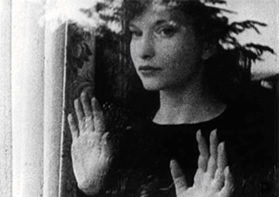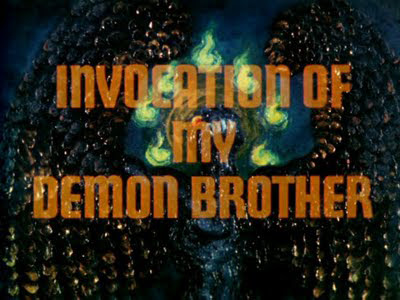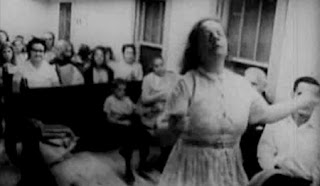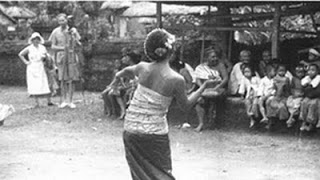Oddball Films Media
•
Jan 14, 2012
Image
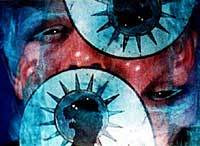
Date: Saturday, January 14 at 8:00PM.
Venue: Oddball Films, 275 Capp Street, San Francisco
Admission: $10 – Limited Seating RSVP to programming@oddballfilm.com or 415-558-8117
A Study in Choreography for the Camera (B+W, 1945)
Maya Deren was one of the most important avant-garde filmmakers of the 20th century working and spending time with such artists as Marcel Duchamp, Andre Breton, John Cage and Anaïs Nin. In A Study in Choreography Maya Deren's 16mm Bolex becomes a performer equal in significance to the star of this film, Talley Beattey. In the opening sequence Deren's camera rotates more than 360 degrees, scanning past the figure in movement. In this film Deren articulates the potential for transcendence through dance and ritual. Deren writes, “The movement of the dancer creates a geography that never was. With a turn of the foot, he makes neighbors of distant places -Wendy Haslem
Meshes of the Afternoon (B+W, 1943)
One of the most influential works in American experimental cinema. Maya Deren's non-narrative work been identified as a key example of the "trance film," in which a protagonist appears in a dreamlike state, and where the camera conveys his or her subjective focus. The central figure in Meshes of the Afternoon, played by Deren, is attuned to her unconscious mind and caught in a web of dream events that spill over into reality. Symbolic objects, such as a key and a knife, recur throughout the film; events are open-ended and interrupted. Deren explained that she wanted "to put on film the feeling which a human being experiences about an incident, rather than to record the incident accurately." (MoMA)
Invocation of My Demon Brother (Color, 1969)
In Invocation of My Demon Brother filmmaker Kenneth Anger creates an altered state of consciousness through the use of cinematic and psycho-spiritual magick techniques.
The film is described by notorious avant-garde filmmaker Kenneth Anger as “An assault on the sensorium” features “underworld powers gathering at a midnight mass to shadow forth Lord Lucifer in a gathering of spirits”. Invocation is a quintessential late 1960 freak-out, containing a montage of drug use, pagan rituals, an albino, stock footage of the Vietnam War, the Rolling Stones in concert and abstract imagery all played back at various speeds. The film is accompanied by a repetitive, droning Moog musical score created by Mick Jagger. In the words of avant-garde film critic P. Adams Sitney “It is Anger's most metaphysical film: here he eschews literal connections, makes images jar against one another, and does not create a center of gravity through which the collage is to be interpreted... the burden of synthesis falls upon the viewer.”
Holy Ghost People (B&W, 1967 - excerpt)
This film is a documentary of a Caucasian Pentecostal congregation whose fundamentalist philosophy encourages a literal interpretation of the Bible. Reveals the religious fervor, the trances, the phenomenon of glossolalia (speaking in new tongues), and the use of rattlesnakes. Filmed by Peter Adair. This film was rightly hailed by Margaret Mead as one of the best ethnographic films ever made, and a staple of classes on anthropology and documentary film, this study of a little-known sect who put their lives on the line for their religion still packs a wallop four decades after its release.
The film was produced by Gregory Bateson and Margaret Mead and records a performance of the Balinese ceremonial kris (dagger) dance-drama, which depicts the never-ending struggle between witch (death-dealing) and dragon (life-protecting), as it was given in the village of Pagoetan in the late 1930s. The dancers experience violent trance seizures, turn their krises against their breasts without injury, and are restored to consciousness with incense and holy water. Narrated by famed anthropologist Margaret Mead against a background of Balinese music. This “ecstatic ethnography” was an extraordinary effort to use film and photography in the field, and the precursor to much of the visual anthropology that has gone on since then.
Arabesque (Color, 1975)
John Whitney‘s Arabesque is considered by many to be the seminal computer film. Set to the music of Manoochelher Sadeghi, and created during a residency at IBM, Whitney balanced science with aesthetics as he experimented with the eccentricities of Islamic architecture creating whirling, exotic flows of computer generated images. Arabesque was one of the first computer-generated films that married technology and art in a focused, cinematic manner. Working with his early homemade computerized motion-control set-up, Whitney could produce a variety of innovative designs and metamorphoses of text and still images creating new worlds of electronic images.
Binary Bit Patterns (Color, 1969)
Image
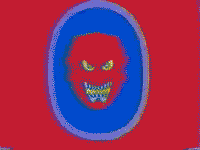
Fantasy (Color, 1976)
A hallucinatory handmade animated film from San Francisco animation legend Vince Collins evokes his particular brand of surrealist psychedelia.
Tanka (1976)
“An extraordinary film”-Melinda Wortz, Art News
Tanka means, literally, a thing rolled up. David LeBruun’s Tanka is brilliantly powered by the insight that Tibetan religious paintings are intended to be perceived in constant movement rather than repose. The film, photographed from Tibetan scroll paintings of the sixteenth to nineteenth centuries, is a cyclical vision of ancient gods and demons, wild revels, raging fires and sea battles with monsters-an animated journey through the image world of the “Tibetan Book of the Dead”.




